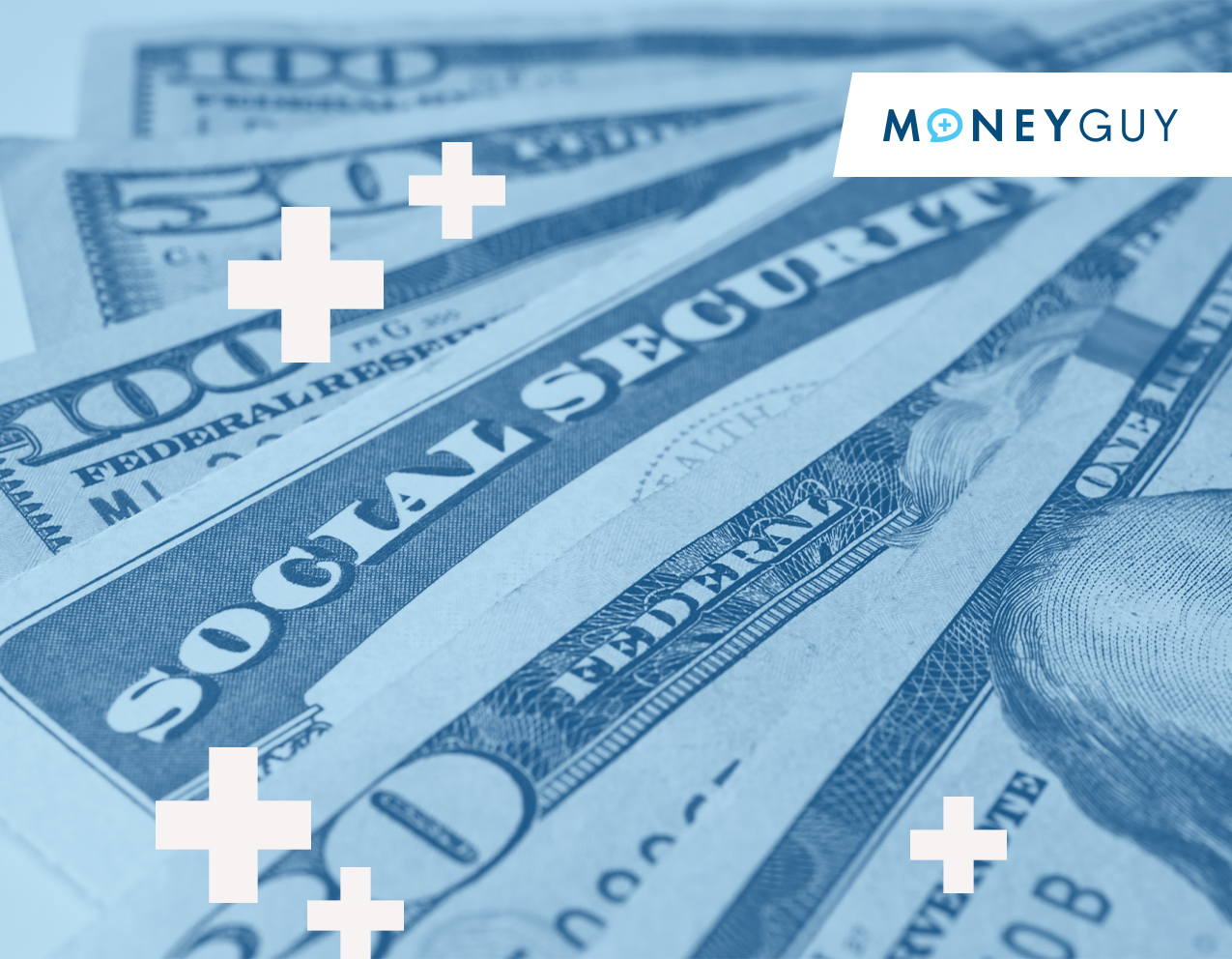
Change your life by
managing your money better.
Subscribe to our free weekly newsletter by entering your email address below.

Subscribe to our free weekly newsletter by entering your email address below.
We’re excited to dive into withdrawal rates — a crucial piece of the financial independence puzzle. Your withdrawal rate determines how much you need invested to support yourself in retirement. If you can safely withdraw more, you can potentially retire sooner.
It’s the percentage of your portfolio you withdraw annually in retirement.
For example, if you retire with $1 million and plan to withdraw 4% annually, you’d take out $40,000 a year.
Many people believe:
“If my investments return 12% annually and inflation is 4%, I can safely withdraw 8%.”
That sounds nice… but it’s wrong.
Market Volatility
The stock market doesn’t deliver a consistent return every year.
On average:
2 out of every 10 years are negative.
Average downturn: –13.77%
Recovery needed after that: +15.97%
Sequence of Return Risk
Withdrawing during early downturns (e.g., first year of retirement) significantly increases the chance of running out of money.
Even if the market recovers later, the early withdrawals compound the losses.
$1 million portfolio
Withdraw $80,000 per year
Include 4% inflation
If a market downturn hits early, you could run out of money in 21 years, not 30.
The Trinity Study evaluated thousands of retirement scenarios and found:
A 4% withdrawal rate is generally safe over a 30-year retirement.
Even for 100% stock portfolios, an 8% withdrawal rate only succeeded 28% of the time.
Having a larger portfolio does not fix the risks tied to withdrawal timing.
Assumptions:
$1 million portfolio
4% withdrawal rate, adjusted for 3% inflation
7% average return (more conservative than 12%)
Even with a bad first year:
The portfolio holds up over 30 years.
It continues to grow, showing that 4% is sustainable.
Adding a 24-month (2-year) cash reserve:
Meant for downturns and recovery periods
Prevents you from withdrawing from investments at a loss
Result:
The investor ends up with $800,000 more than if they’d pulled from their portfolio during the bad years.
Don’t assume high average returns mean safe high withdrawals.
Sequence of returns matters — early losses can devastate retirement.
Use the 4% Rule as a conservative baseline.
Maintain 18–36 months of cash reserves to buffer against down markets.
Always stress-test your plan for both good and bad years.
For more on financial planning and retirement strategies, check out the rest of our free content on YouTube, our podcast, or at moneyguy.com.
Subscribe on these platforms or wherever you listen to podcasts! Turn on notifications to keep up with our new content, including:
Guys, I am so excited to talk about this because we love helping people create a better financial life for themselves, and your withdrawal rate is a pretty important part of that equation. It’s ultimately what determines the amount you need to have invested to be considered financially independent. If you can withdraw more, you can be financially independent that much sooner.
Your withdrawal rate is simply the amount of money you can withdraw from your portfolio in retirement. It’s a number that is determined by your portfolio value when you retire, usually expressed as a percentage. And there’s a lot of discourse around what can be considered a safe withdrawal rate—or the amount that you could theoretically pull out every year without running out of money. Unfortunately though, this is something that a lot of people get very, very wrong. It is one of the biggest misunderstandings in personal finance, and it can have a disastrous effect on your financial life.
You know what else can have a disastrous effect on your financial life? Forgetting to like this video—so smash that like button if you haven’t already!
All right, now back to the withdrawal rate discussion. Some people believe that if their portfolio returns an average rate of 12% and they factor in 4% for inflation, that means they can safely withdraw 8% of their portfolio value when they retire. Here’s the problem: that math just doesn’t work, and it’s making some very bold assumptions. So, bold strategy, Cotton—let’s see if it pays off for them.
Let’s walk through the numbers. For this example, let’s use a $1 million portfolio for a 30-year retirement. Using an 8% withdrawal rate, that’d be $80,000 a year in retirement income, adjusted for 4% inflation annually. And you can see that if you truly did average a 12% rate of return every year, it would work.
So what’s the problem?
We know that the stock market doesn’t work that way. On average, the market experiences a negative return around two out of every ten years, and the average size of that downturn is 13.77%. Not only that, but in order for the market to make a full recovery, it actually has to make more than 13.77%. This is a concept known as percent loss and recovery asymmetry.
For example, let’s say you have $100, and you see a 25% drop. You’re left with $75. To get back to $100, you would need to regain $25—but now that’s a 33% rate of return on the $75 you have remaining. So a 25% drop needs a 33% recovery to get back to its original value. In our case, if you saw an average market downturn of 13.77%, then you would need to make a 15.97% recovery to get back to your initial value.
If we go back to the case study, and you experience an average down market year at any point within the first nine years of your retirement—even if the market fully recovers the next year—you would likely run out of money before you had been retired for 30 years. And the earlier you experience that loss, the sooner you run out of money.
For example, if you get the timing really, really wrong and you saw that downturn in your first year of retirement, you would likely run out of money after just 21 years. So the 8% withdrawal rate really fails for two reasons. The most obvious problem with it is the fact that an annualized rate of return—especially over such a long time period—of something like 12% just isn’t realistic. Even if you manage to be invested 100% in something like a large-cap growth stock mutual fund that beat the market an average 12% year over year, it’s still going to have taxes and management fees, and those are going to take a big bite out of those gains.
And the second problem is that an 8% withdrawal rate ignores what is known as sequence of return risk, which is the possibility of experiencing negative returns close to the time you retire. The earlier you experience those losses, the bigger the overall impact can be to your portfolio, since you’re still trying to pull money out while the market’s trying to recover. Experiencing a loss later on in retirement is less impactful because your portfolio had time to grow prior to that loss. So the order in which your portfolio goes through these market fluctuations can really impact your retirement. The sequence of returns carries risk—that’s where we get the term. Basically, the timing of your retirement matters relative to what’s going on in the broad market.
So then this begs the question: well, how do I mitigate sequence of return risk? If 8% is not safe, what is?
Well, for that, we have to look at what’s known as the Trinity Study, which is sort of what popularized the concept of sequence of return risk and withdrawal rates. The Trinity Study looked at thousands of retirement scenarios, changing portfolio allocations and withdrawal strategies. And what they found was that a 4% withdrawal rate in retirement could generally be considered safe. And that’s come to be the rule of thumb for most people in the personal finance space.
Even in a portfolio of 100% stocks—where there’s the most theoretical potential for growth—an 8% withdrawal rate had a success rate of only 28%. And that was true regardless of portfolio value. Meaning if you’re just thinking, “Oh, well I’ll just have a bigger portfolio and more money,” the math still doesn’t math.
But let’s see the 4% rule in action with an apples-to-apples example. For this example, we’re going to assume a portfolio value of $1 million with a withdrawal rate of 4%, adjusted for 3% annual inflation. We’re also now going to assume a 7% rate of return instead of a 12% rate of return to reflect a more conservative portfolio in retirement. You can see that even experiencing that same drop in the first year of retirement, this investor didn’t run out of money—and their portfolio was actually able to grow over the course of that 30 years. And remember, that assumed only a 7% rate of return, which is 5% less than the rate of return we used to evaluate the 8% withdrawal rate.
But guess what—we can actually take it even one step further. We suggest that retirees maintain a pretty robust cash buffer, somewhere between 18 to 36 months of living expenses, as an emergency reserve specifically for the purpose of mitigating sequence of return risk. And you would not believe the effect that this can have on your overall portfolio.
So let’s assume this investor has 24 months of living expenses, or two years, in cash reserves. And when the market turns down, they don’t have to pull out of their portfolio during the downturn or the recovery. By simply keeping cash on hand and using those funds during the downturn, we can see that the investor not only has retired comfortably but actually has over $800,000 more than if they had withdrawn during those two years of downturn.
So for anyone who likes to cowboy it and roll without a fully funded emergency fund, just recognize—it could be costing you hundreds of thousands of dollars. So measure twice, cut once. Make sure that the plan you have for your money has been stress-tested to weather both the good years and the bad.
All right, that’s all we’ve got for this one. But be sure to check out all of our other content here on YouTube, out on the podcast, and at moneyguy.com if you want to learn more. Till next time.


How Much Should You Save?
How much of your income can you replace in retirement? You can replace different portions of your income in retirement…
View Resource
When Should I Claim Social Security?
Social Security can have big impacts on your retirement. But knowing when to draw Social Security can depend on a…
View Resource
The Money Guy Guide to Retirement
Here are 9 insights you don’t want to miss… Whether you are 30 years away from retirement or 5 years…
View Resource


How about more sense and more money?
Check for blindspots and shift into the financial fast-lane. Join a community of like minded Financial Mutants as we accelerate our wealth building process and have fun while doing it.




It's like finding some change in the couch cushions.
Watch or listen every week to learn and apply financial strategies to grow your wealth and live your best life.
Subscribe to our free weekly newsletter by entering your email address below.